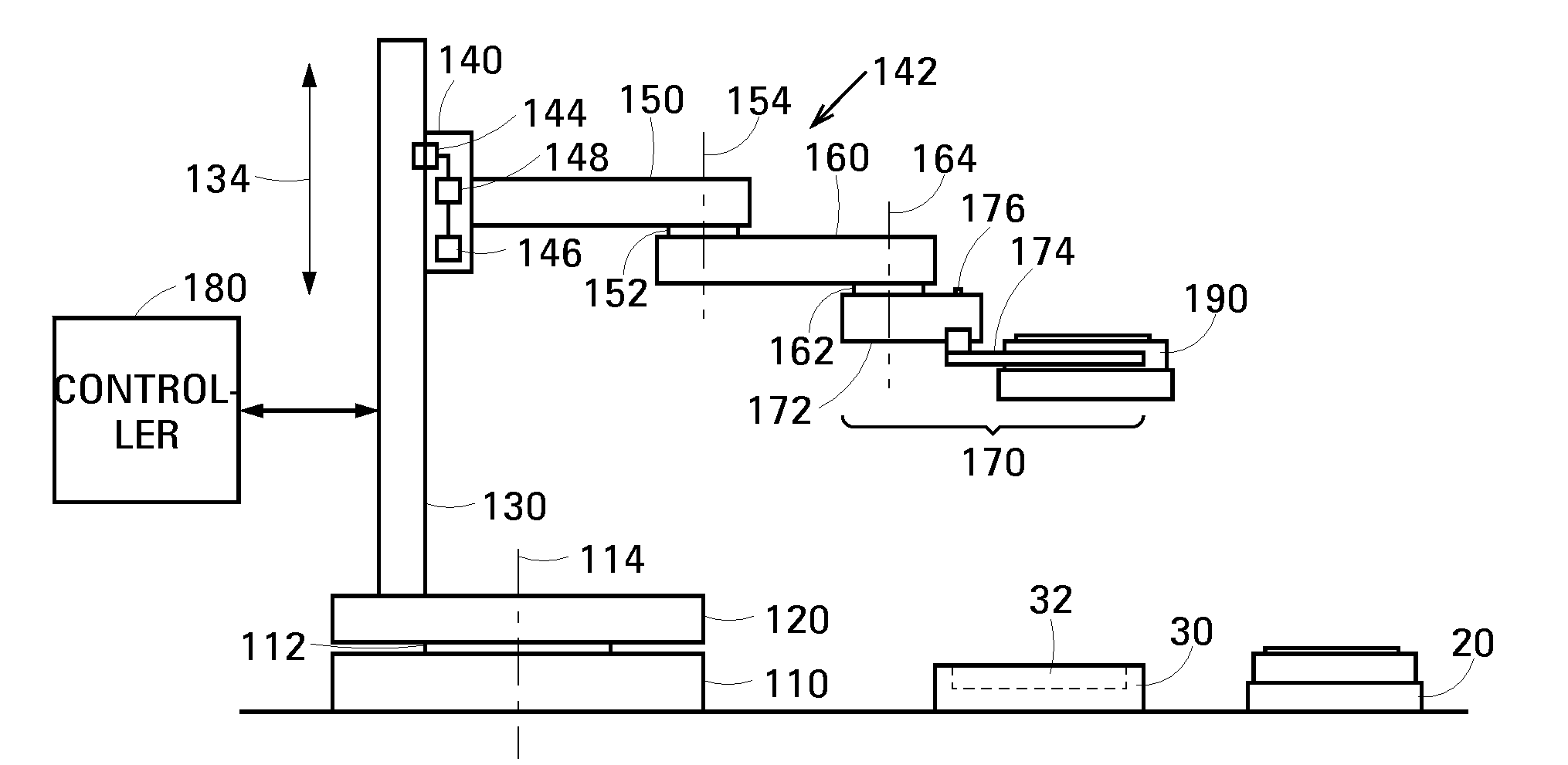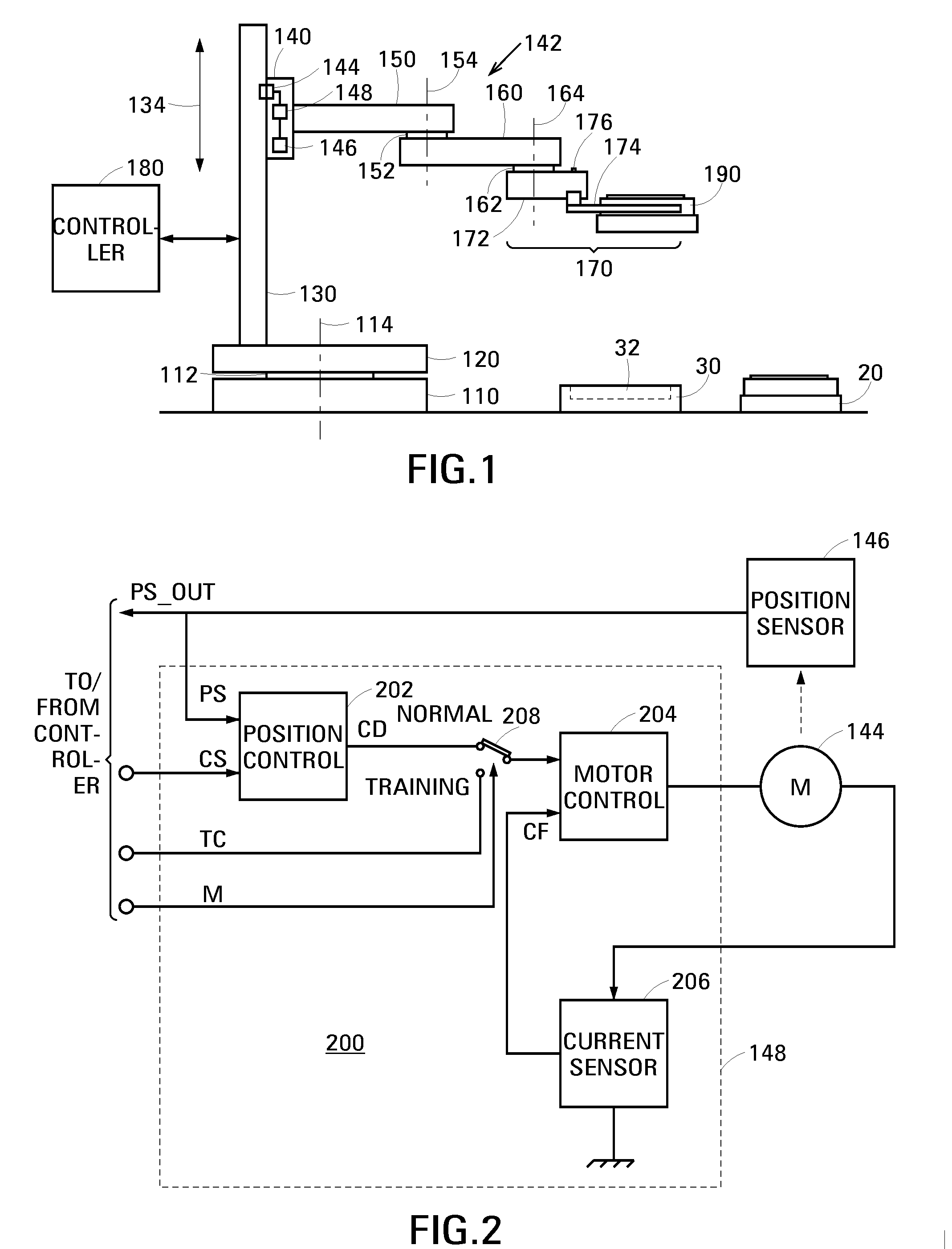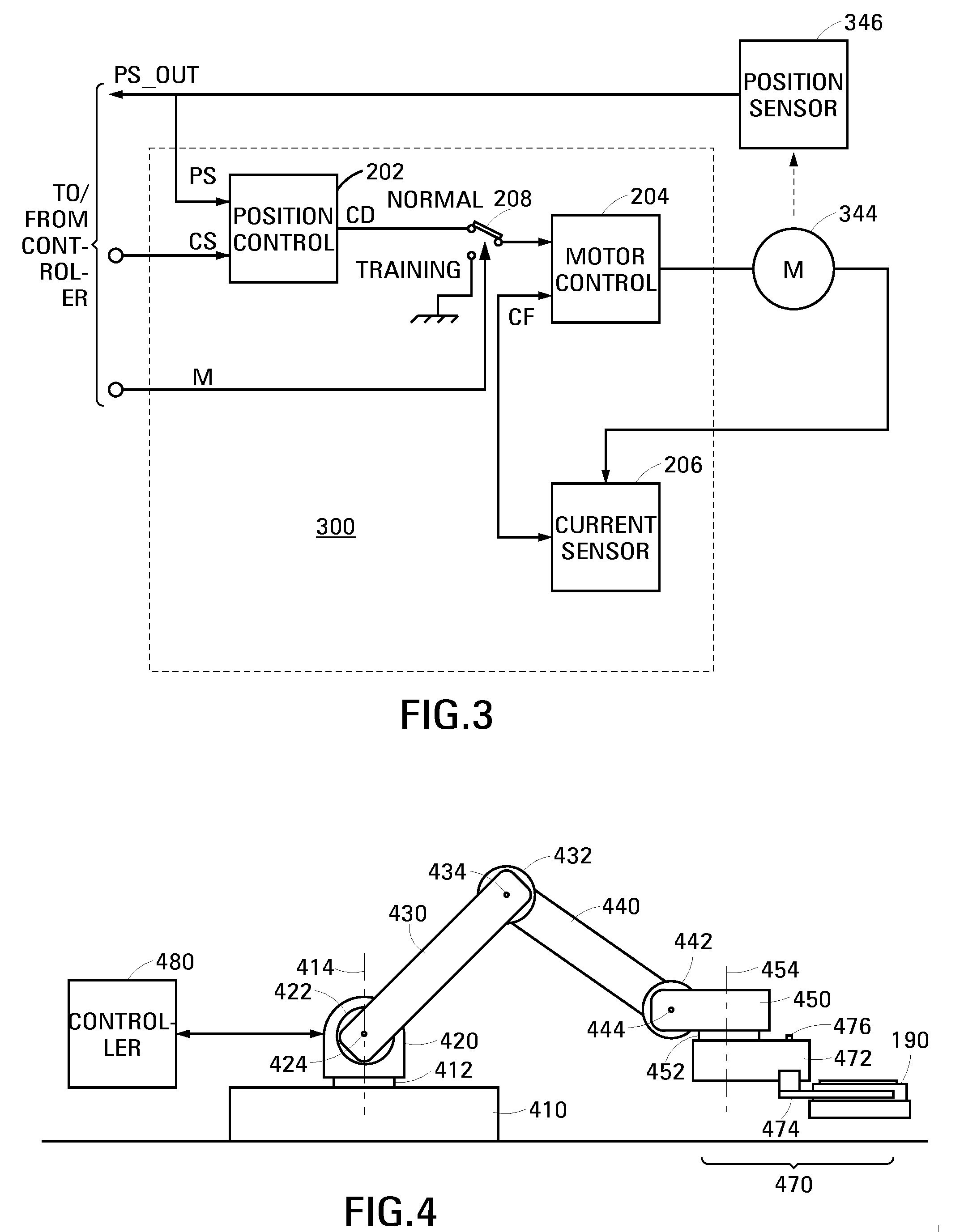Trainable Robot and Method of Training
a robot and training method technology, applied in the field of training robots and methods, can solve the problems of increasing non-linearly the time required for training, tedious and time-consuming training protocols, and wasting tim
- Summary
- Abstract
- Description
- Claims
- Application Information
AI Technical Summary
Problems solved by technology
Method used
Image
Examples
Embodiment Construction
[0018]A robot in accordance with an embodiment of the invention comprises a movable member, a motor operable to change a position of the movable member relative to a gravitationally-loaded axis, and a servo operable to control the motor. The servo has a normal operational mode in which it controls the motor to define the position of the movable member relative to the gravitationally-loaded axis. The servo additionally has a training mode in which it controls the motor to set the movable member to a weightless state. In its weightless state, a user can easily and accurately move the movable member to train the robot.
[0019]FIG. 1 is a schematic drawing showing an example 100 of a pick-and-place robot in accordance with an embodiment of the invention. Robot 100 is composed of a mounting 110, a base 120, an elongate track 130, a stage 140, an upper arm 150, a forearm 160, an end effector 170 and a controller, schematically shown at 180. Base 120 and track 130 as a unit, stage 140 and up...
PUM
 Login to View More
Login to View More Abstract
Description
Claims
Application Information
 Login to View More
Login to View More - R&D
- Intellectual Property
- Life Sciences
- Materials
- Tech Scout
- Unparalleled Data Quality
- Higher Quality Content
- 60% Fewer Hallucinations
Browse by: Latest US Patents, China's latest patents, Technical Efficacy Thesaurus, Application Domain, Technology Topic, Popular Technical Reports.
© 2025 PatSnap. All rights reserved.Legal|Privacy policy|Modern Slavery Act Transparency Statement|Sitemap|About US| Contact US: help@patsnap.com



